Are you passionate about protecting our planet's incredible wildlife? As our ecosystems face unprecedented challenges, it's essential to come together and champion conservation efforts that safeguard endangered species and their habitats. In this article, we'll explore various initiatives and practices that make a real difference in wildlife preservation. Join us on this journey to learn more about how you can contribute to these vital efforts!
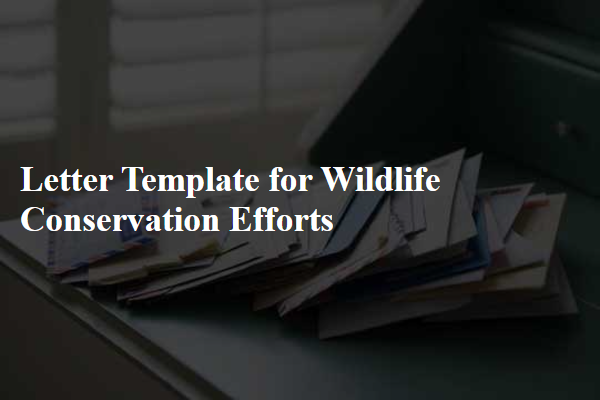
Emotional appeals
Wildlife conservation efforts significantly impact ecosystems and biodiversity, focusing on protecting endangered species. Charismatic megafauna, such as the African elephant and the Bengal tiger, face threats like poaching and habitat loss, with populations dwindling to alarming levels. In the Amazon rainforest, deforestation continues at an unprecedented rate, pushing species closer to extinction and disrupting critical habitats. Organizations like the World Wildlife Fund (WWF) and the International Union for Conservation of Nature (IUCN) strive to implement conservation policies and raise awareness about the importance of preserving our planet's natural heritage. Emotional connections to wildlife can inspire individuals to take action, fostering a collective responsibility to preserve species for future generations, ensuring that the sounds of howler monkeys and the majestic flight of condors remain part of our world.
Specific conservation goals
Wildlife conservation efforts play a critical role in preserving biodiversity and ecosystems worldwide. Specific conservation goals include the protection of endangered species, such as the Amur leopard, with fewer than 100 individuals remaining in the wild, and the restoration of habitats like tropical rainforests, which cover approximately 6% of Earth's land surface but face deforestation at alarming rates of over 13 million hectares annually. Protecting migratory routes for species such as the Monarch butterfly, which travels over 3,000 miles from North America to Mexico, is also crucial for maintaining their populations. Establishing protected areas, such as national parks like Yellowstone, spanning over 3,400 square miles, helps safeguard both flora and fauna while promoting ecotourism, which can provide sustainable funding for conservation initiatives. Engaging local communities in conservation efforts is essential; for instance, successful projects in Kenya have demonstrated that involving indigenous populations can lead to increased wildlife protection and restoration of grasslands that are crucial for species like the African elephant.
Urgency and call to action
Wildlife conservation efforts face increasing challenges from habitat loss, climate change, and poaching. In 2023, nearly 1 million species are at risk of extinction according to the United Nations. Endangered species, such as the Amur leopard (fewer than 100 individuals remaining) and the Sumatran orangutan (approximately 14,000 left), require immediate protection. Conservation areas like Yellowstone National Park in the United States and the Serengeti National Park in Tanzania play crucial roles in preserving biodiversity. Initiatives such as reforestation and anti-poaching campaigns are essential to halt the decline of these species. The urgent need for community involvement and funding toward conservation programs can create a significant impact in protecting wildlife habitats and fostering ecosystems. Taking action today can ensure a sustainable future for generations to come.
Supporter involvement opportunities
Engaging in wildlife conservation efforts offers diverse opportunities for supporters to contribute meaningfully to environmental protection initiatives. Volunteer programs, often organized by non-profit organizations like the World Wildlife Fund (WWF) or Conservation International, invite individuals to participate in on-the-ground fieldwork, including habitat restoration and species monitoring in areas such as the Amazon Rainforest or the Serengeti Plains. Donations can be directed to specific projects aimed at protecting endangered species like the Bengal tiger or the California condor, with funds used to support research and anti-poaching efforts. Awareness campaigns, often hosted during events such as World Wildlife Day (March 3), encourage community involvement through educational workshops focused on sustainability practices and advocacy. Supporters can also participate in citizen science projects, contributing data collection on local wildlife, which helps researchers track biodiversity changes over time.
Success stories or achievements
Wildlife conservation initiatives have led to remarkable successes in the preservation of endangered species and habitats. The reintroduction of the gray wolf (Canis lupus) to Yellowstone National Park in the United States in 1995 has revitalized the ecosystem, promoting biodiversity and stabilizing prey populations such as elk. The efforts of organizations like the World Wildlife Fund (WWF) have helped increase the population of the giant panda (Ailuropoda melanoleuca) in China from approximately 1,000 individuals in the 1970s to around 1,864 today, thanks to habitat preservation and breeding programs. Marine conservation efforts, including the establishment of marine protected areas (MPAs), have successfully increased fish populations and restored coral reefs in regions such as the Great Barrier Reef in Australia. These achievements underscore the vital importance of continued investment and community engagement in wildlife preservation, fostering a sustainable future for both wildlife and human communities.
Letter Template For Wildlife Conservation Efforts Samples
Letter template of outreach to local community for conservation education

Letter template of collaboration with organizations for wildlife protection
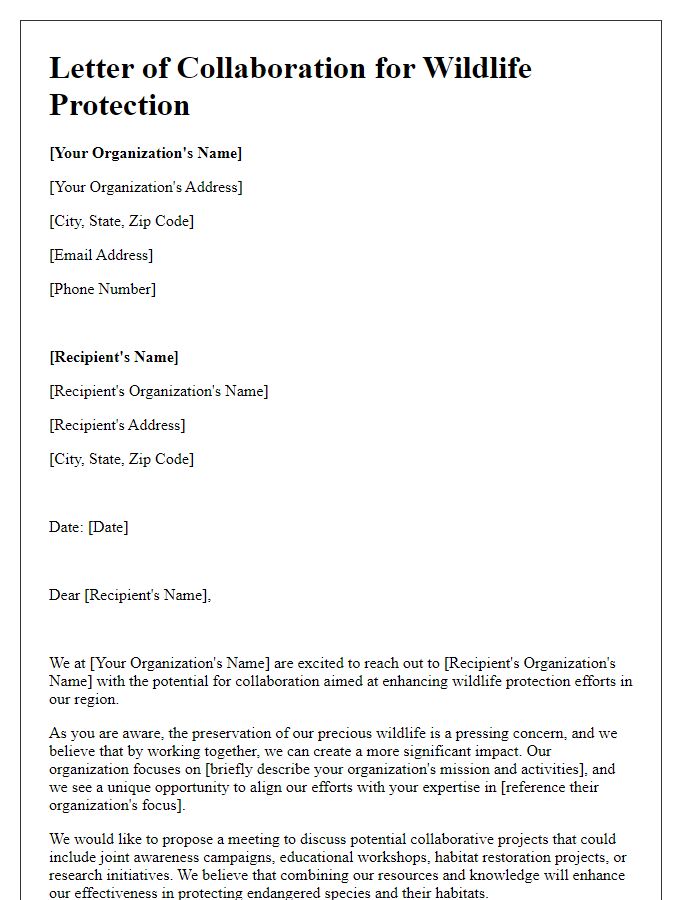

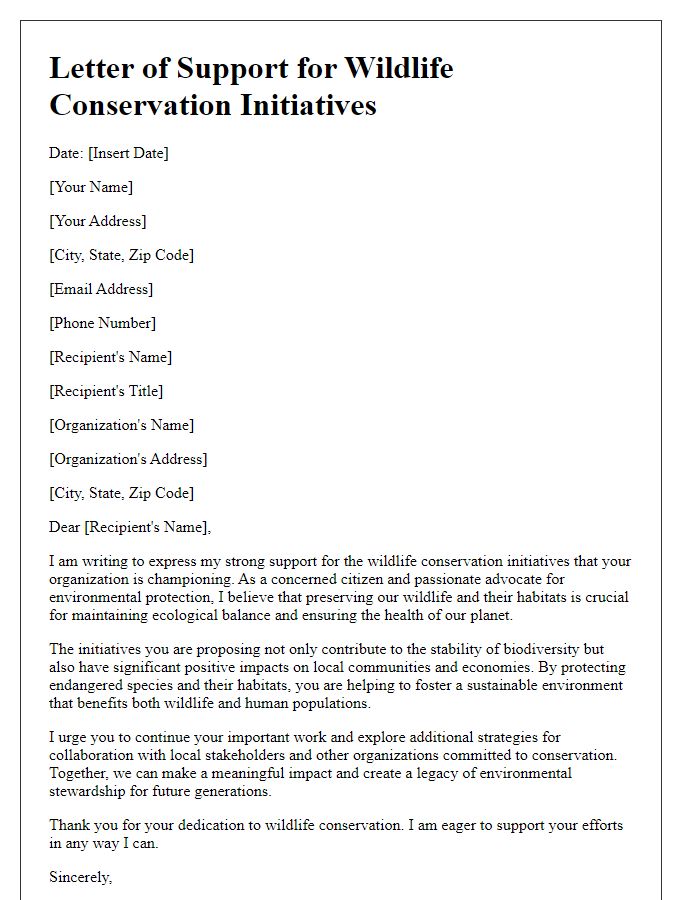
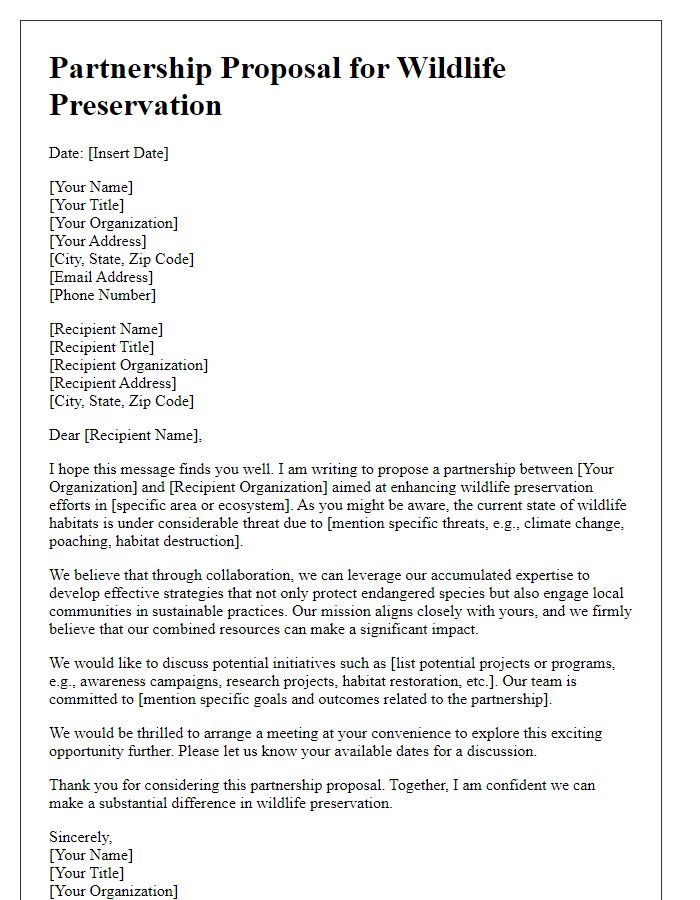
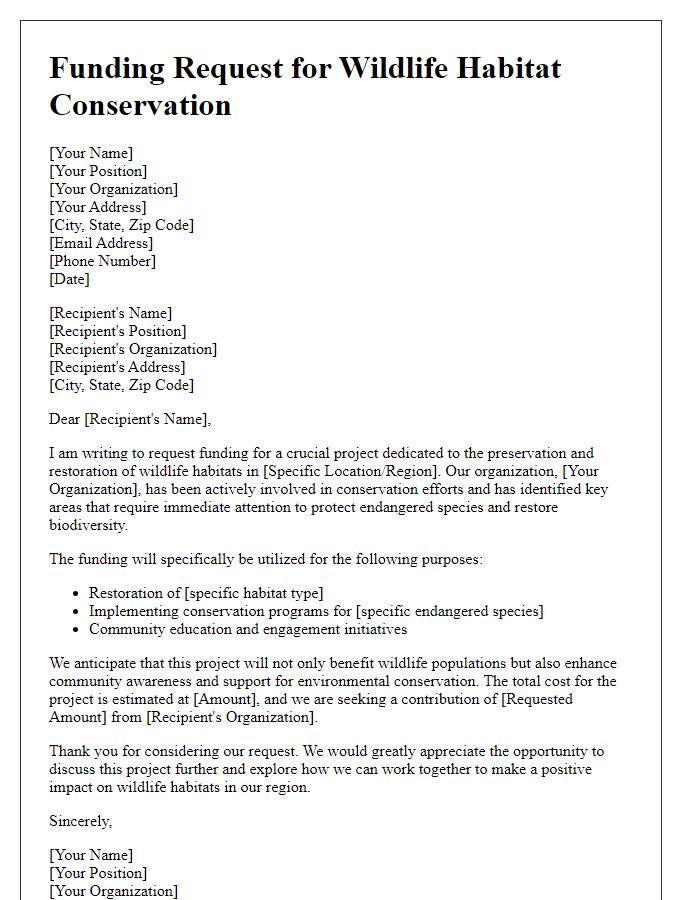
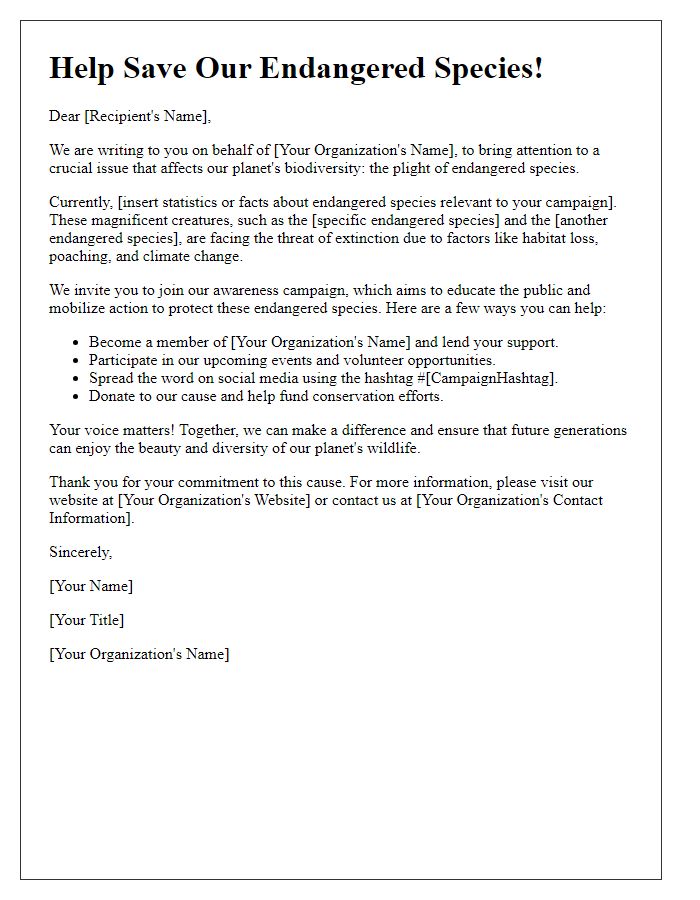
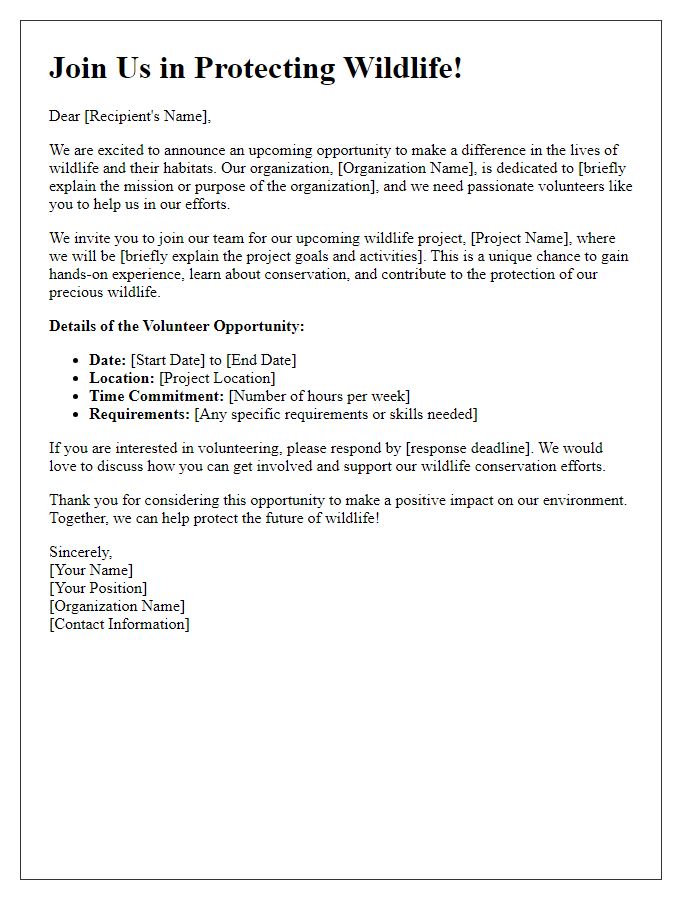
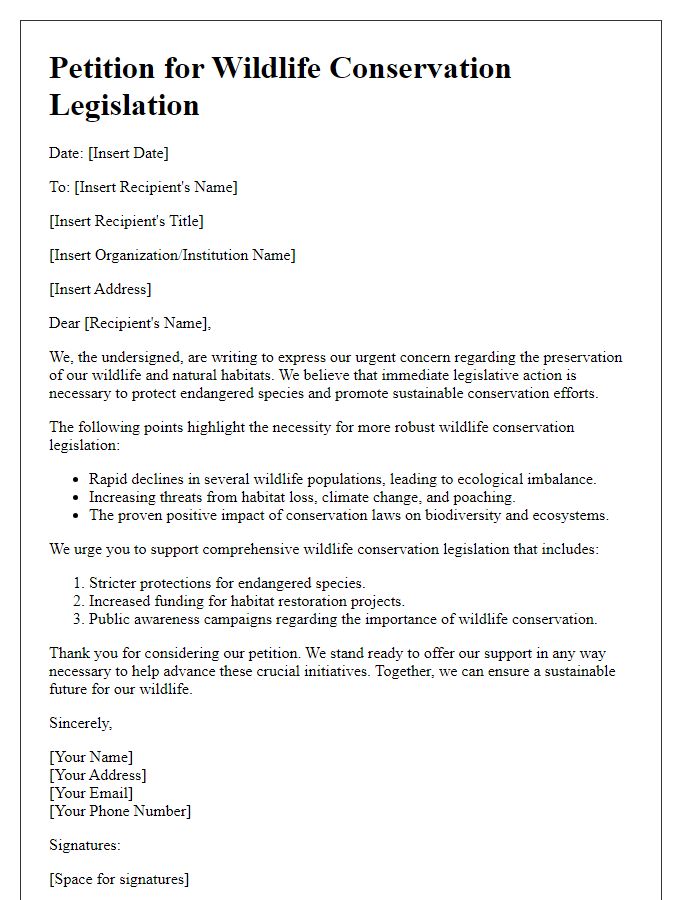

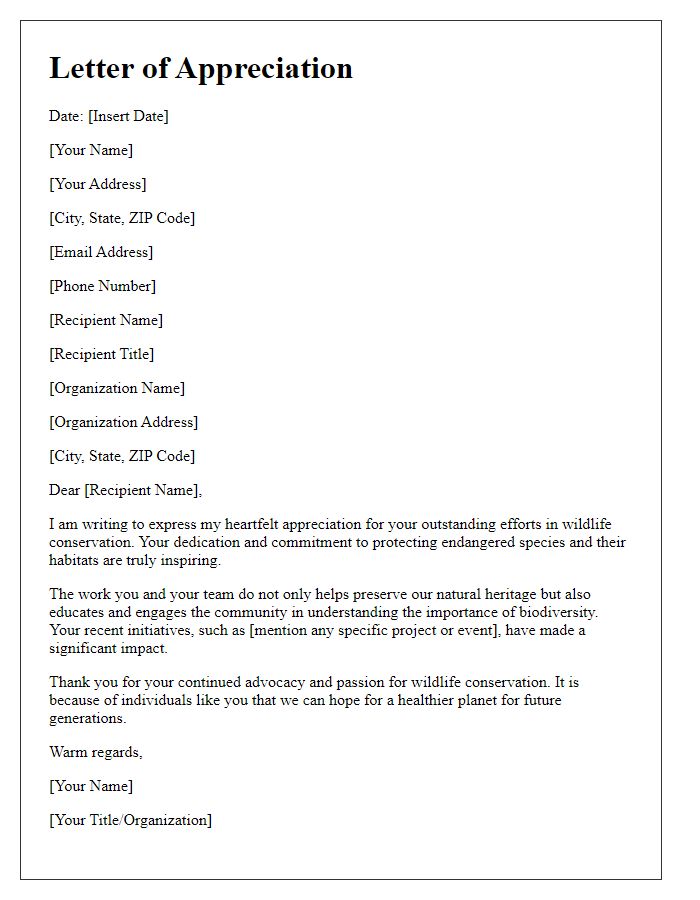


Comments